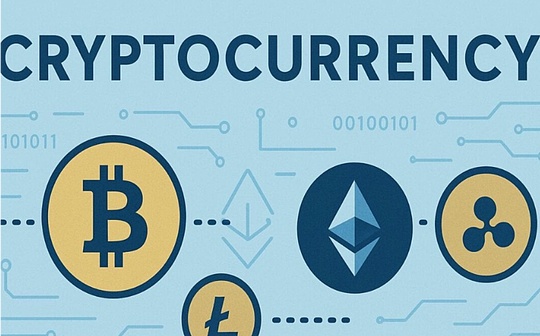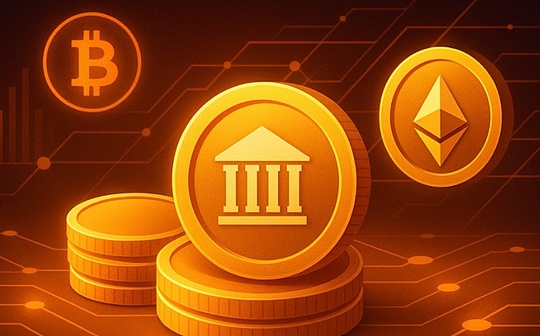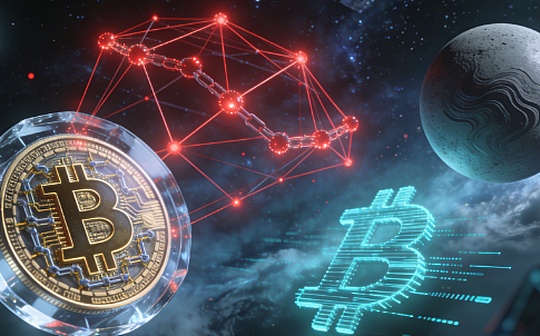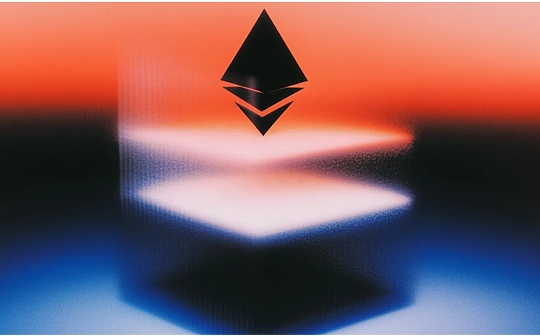
Author: Charlie Liu
Write in front
20 years ago, I became obsessed with the topic of China’s energy security in middle school, and therefore opened the door to careers in macro investment, global payments, and cryptocurrencies.
In today’s historical opportunity period of the productivity + production relations revolution caused by AI and Crypto, I didn’t expect that the story returned to the origin of energy and electricity.
New anchor of currency
In the AI era, “electricity” has become a new scarce factor.
Whoever can organize power and computing power on a larger scale, lower cost and more stable basis will be more qualified to embed their currency into the next generation of payment networks.
Stablecoins are not magic, they just package a country’s industrial chain, energy chain and settlement chain into a programmable “interface”.
When the interface is connected to the power plant and the computer room, the anchor of the currency is quietly moved from gold and oil to kilowatt-hours.
If we look at the timeline of the US dollar story: the first half is on the gold standard, the second half is on the oil standard, and then the “debt standard” – the unparalleled fiscal and treasury bond market provides the ultimate liquidity.
This system cannot collapse overnight, but in this“AI revolutionary productivity, Crypto revolutionary production relations”In the era, it is no longer the only option of nature.
When the anchor of the currency moves from physical to balance sheet, politics and maturity will penetrate into pricing.
Even if the market does not agree with the most pessimistic long-term narrative, it can be seen that another parallel pipeline is being laid.
Stablecoin’s flywheel
Stablecoins are this new pipeline, which moves clearing from cross-border proxy and messaging systems to public networks and peer-to-peer settlement.
Geopolitics makes abstract issues very specific—when certain banks are excluded from SWIFT, and when card organizations suspend services in certain markets, businesses and sovereignty will naturally look for ways to “cannot unplug the power”.
We will not make value judgments here, but only talk about physical reality: if your export can be settled on a track that others cannot pull out, your bargaining power will be compounded at the speed of network effects.
This is also why the news of “RMB Stable Coin” is on the surface a token, but on the bottom it is actually energy.
Over the past decade, China has exported not only equipment and engineering overseas, but also transformed the full-stack capabilities of power generation, transmission, energy storage, and data centers into replicable products.
Tokens are just user experience in settlement, and the moat lies in the real supply capacity of electricity and steel cement piled up..
This closed loop has actually been run in some places as a “tokenless version”.
The capital expenditure of the power station comes from China, the equipment comes from China, the operation and maintenance and spare parts come from China, the electricity bill settlement is denominated in RMB, and the funds are connected through Hong Kong and onshore offshore accounts.
Think of the socket on the wall as a cash inlet, the electricity bill passes through the local distribution network, and finally stops in the RMB account, without the need to transfer the US dollar to harvest a value.
Put this path in another layer of programmable settlement, and the stablecoin just increases the speed and makes financing and risk control into code.
Energy and infrastructure
Why must it be energy?
Because AI has pushed electricity to the center of the currency stage, because with the large-scale popularization of AI, training and reasoning have risen from mathematical problems to power problems.
Today’s data centers have consumed a significant share of global electricity use, while model size and service density are still rising.
Large American technology companies are diving into “clean and stable base-load power”: nuclear power contracts, long-term locking, distributed and energy storage at the same time.
This is not ESG sentiment, but a physical constraint on traditional energy.
The ceiling of the AI depends on the generator behind the socket.
Next is a more acute question: Who can build the power out as fast as possible, as large as possible, on time and in terms of texture?
The integrated packaging of fans, photovoltaics, inverters, transformers, DC power transmission, phase regulation, energy storage, cooling and parks is implemented, and delivered according to progress in an unfamiliar geographical and regulatory environment. This tests the elasticity of industrial clusters, supply chains and engineering “muscle memory”.
Over the past decade, highways, railways, hydropower, ultra-high voltage and various park projects have been iterated overseas, making a set of “electricity-engineering-finance” flywheels more and more convenient.
The most intuitive feeling is that I made macro investments at Franklin Templeton in 2014. When I was on a business trip in Africa, the newly built local expressway led to Nairobi, and the Zambia Convention and Exhibition Center became a new local landmark overnight.
When facing complex terrain, the engineering team only regards it as a progress management problem.You can question funding efficiency, but it is hard to deny this ability to “delivery on time” in complex environments, which is precisely the scariest part of the closed loop of “power-currency”.
The capital efficiency of investment may not be the “optimal” in textbooks, but ability is the ability accumulated over a long period of time, which is a moat that cannot be seen in the account book.
Oil is of course still on the stage, especially in the Middle East – a region that embraces both crypto assets and new settlement experiments.
But the focus of energy will fall more on renewable and “in-place” clean electricity in the next decade.
Hydropower, wind and energy storage lock the value on geography, and superimpose the data sovereignty requirements of various countries, local data centers and local electricity are a natural pair:On one hand, it is the power conversion calculation, and on the other hand, it is the calculation conversion service, it is best to take a track that does not require crossing the system of other countries.
The landing of RMB stablecoin
There are two very realistic paths here.
The first is to settle directly for electricity.
Compared with commodity trade, electricity purchase and sale contracts are more in line with the programmable properties of stablecoins – how much to issue, how much to copy, how much to pay, and the full link is digitized, and the currency can follow the electricity meter.
Today, there are electricity, operation and maintenance fees and financing leasing denominated in RMB. After tokenization, it only makes accounts faster, financing more flexible, and mortgages more combinable.
The second article is to service settlement for computing power and model.
Electricity becomes “AI output” in the computer room, and enterprises and developers use stablecoins to buy API calls, model tokens, vector storage and inference time.
Many cross-border digital services in emerging markets have long used US dollar stablecoins as “dollar substitutes”. When the supply chain and service ends come from China more, an offshore RMB stablecoin has become the second choice to go with the flow.
If this framework is still abstract, go back to a ridiculed case.
In 2021, when I was in charge of the global strategy at Jack Mallers’ Strike, I helped El Salvador define Bitcoin as fiat currency. At that time, the president proposed to use “volcanic geothermal” mining to turn local resources into global liquid digital assets.
The process is not perfect, but the direction is right: turn the natural endowment of “geography exclusive” into a tradable unit of value through energy and code.
AI and stablecoins are industrializing this idea.
At that time, “using volcanic mining” was regarded as a joke. Today, it is like the advance version of “power standard”.
The flywheel in the second half of the sea
Back to the main line, from oil to electricity, the key to the closed loop lies in the “recirculation” of money.
In the past, others questioned the use of RMB to settle energy, and the biggest replies were, “What can I buy the RMB I got?”
The traditional answer is RMB offshore pool, dim sum bond, and panda bond, which can be used, but the market is very thin.
The new answer is more direct: buying electricity, buying calculation, buying equipment, and buying services.
Your generator set, inverter, energy storage system, vehicle and charging facilities come from China, operation and maintenance and upgrades come from China, and the software and hardware and services of the data center come from China, so the “recirculation” of foreign exchange reserves does not require US dollars to jump.
What’s more, with the wider “China Intelligent Manufacturing” going overseas, the things that can be bought in the RMB can meet almost all aspects of life and business. We can even abandon making white brands for overseas brands and make real high-quality direct supply.
Of course this means“The second half of going overseas” we need to do more homework in brand power and storytelling, but at least the purchasing power and liquidity pool of money naturally grows in the stack on the supply side.
A new competition and cooperation game for a great power
If we put the conclusion more unpleasantly: the token that wins the stablecoin war is not necessarily the best audit and the most friendly regulation, but the currency system that is tightest coupled with “low price, stable power and high-density computing power”.
If China promotes offshore RMB stablecoins, the real “secret weapon” is not token design, but to deliver fans, photovoltaics, transformers, ultra-high voltage and data centers worldwide, and denominate this set in RMB.
That will be a new monetary order from “oil anchor” to “electricity anchor”.
Of course, this road is not without noise.
The expansion of nuclear power and clean “strong base load” power will be subject to approval and supply chain, and it will be difficult to achieve overnight in the short term.
And don’t underestimate the self-repair ability of the United States: if the US dollar version of the compliant stablecoin framework runs through and invests heavily in cleaning and stabilizing power, the network effect of the US dollar can be further layered at the software level.
In terms of direction, AI has established electricity as a new constraint; in the face of constraints, payment will follow the path of lowest cost and currency will follow.
If I leave a sentence for the reader, I will choose this sentence:
AI makes electricity a “first variable”, crypto and stablecoins just connect this physical variable directly to the currency system; whoever can organize electricity and calculation most effectively will be more qualified to define the next generation of currency interfaces..






